Introduction to Impact-Echo
In this article, we will briefly review how to test concrete using impact-echo method. Impact Echo is an advanced non-destructive testing (NDT) method for evaluation of thin concrete and masonry members. Impact-Echo method works based on the use of stress waves. The test method was first adapted in 1998 as a standard test procedure by the American Society of Testing Materials (ASTM C 1383) “Standard Test Method for Measuring the P-Wave Speed and the Thickness of Concrete Plates Using the Impact-Echo Method.”
How Does Impact-Echo Work ?
When a short-duration impact is applied on the surface of concrete, the applied disturbance (stress) propagates through the member.
The wave propagation happens through propagation of three main types of waves: primary (compression) waves or P-waves, secondary (shear) waves or S-waves, and Rayleigh (surface) waves or R-waves.
While P- and S- waves travel into the concrete along expanding spherical wave fronts, R-waves travel away from the impact point along the “near-surface”. As P- and S- waves propagate within concrete element, they get reflected by internal flaws or external boundaries. The impact-echo testing is commonly looking into reflection of P-wave, since the P-waves causes much larger displacement when compared to displacement due to other waves forms (e.g. S-waves).
How to Determine P-Wave Velocity?
The P-wave velocity (VP) can be determined with a short-duration mechanical impact at a particular distance (150 mm with a 5 mm diameter impactor) from two transducers linearly positioned at a known distance apart (~300 mm) along the surface of concrete. The P-wave speed can be then calculated via dividing the distance between the two transducers by the relative arrival times of the generate P-waves.
Applications of Impact Echo Method
Impact-Echo is a very practical testing solution with a wide range of applications in condition assessment of concrete structures. The test can be used to:
1. Estimate Thickness of Concrete Elements
Impact Echo is widely used by engineers to assess the thickness of concrete elements. This is specially important in concrete elements with one-side access (Single Side Access), such as:
- Tunnel linings: Thickness measurement is critical in the QC process for tunnel linings. It is also an important parameter for structural evaluation purpose.
- Trunk Sewers: In trunk sewers, IE can help engineers estimate the thickness of existing lining. This becomes extremely challenging because intrusive methods involving hot work with core drilling is not a safe nor cost-effective solution. Moreover, there is always the risk of coring in shallow sections with high hydro static pressure.
- Concrete Tanks: Testing concrete tanks that are used in industrial chemical processes is often challenging. Maintenance managers of such facilities often have very short downtime windows, and permission to get inside the tank is not always practical (unless during essential maintenance cycles). IE enables thickness measurement and quality assessment from exterior face.
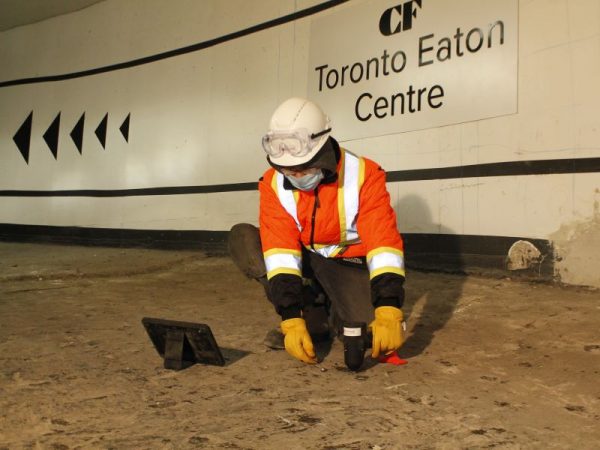
2. Locate Sub-Surface Defects
The impact echo can be used to assess certain defects in concrete elements. IE can pinpoint the following defects:
- Delamination: IE method can be used for detection of subsurface progressive defects such as delamination due to corrosion of steel reinforcement in concrete bridge decks, parking garage slabs, and concrete tanks.
- Honeycombing: IE is a great tool in the Quality Control and Quality Assurance of new construction. IE can be used to localize honeycombs in concrete.
- Flaws/Voids/Debonding: IE can be utilized in different structural members in order to determine the location and depth of internal flaws (e.g. flaws and voids) and debonding in plain, reinforced, and post-tensioned concrete structures, including:
- plates (slabs, pavements, walls, decks),
- layered plates (concrete with asphalt overlays),
- columns and beams (round, square, rectangular and many I and T cross-sections), and
- hollow cylinders (pipes, tunnels, mine shaft liners, tanks).
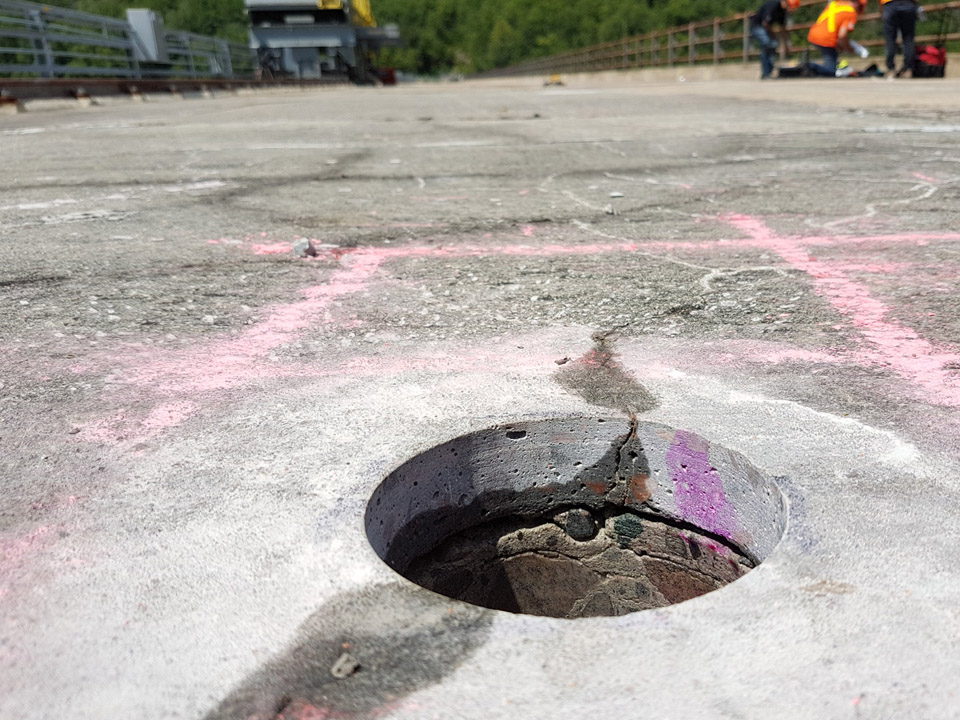
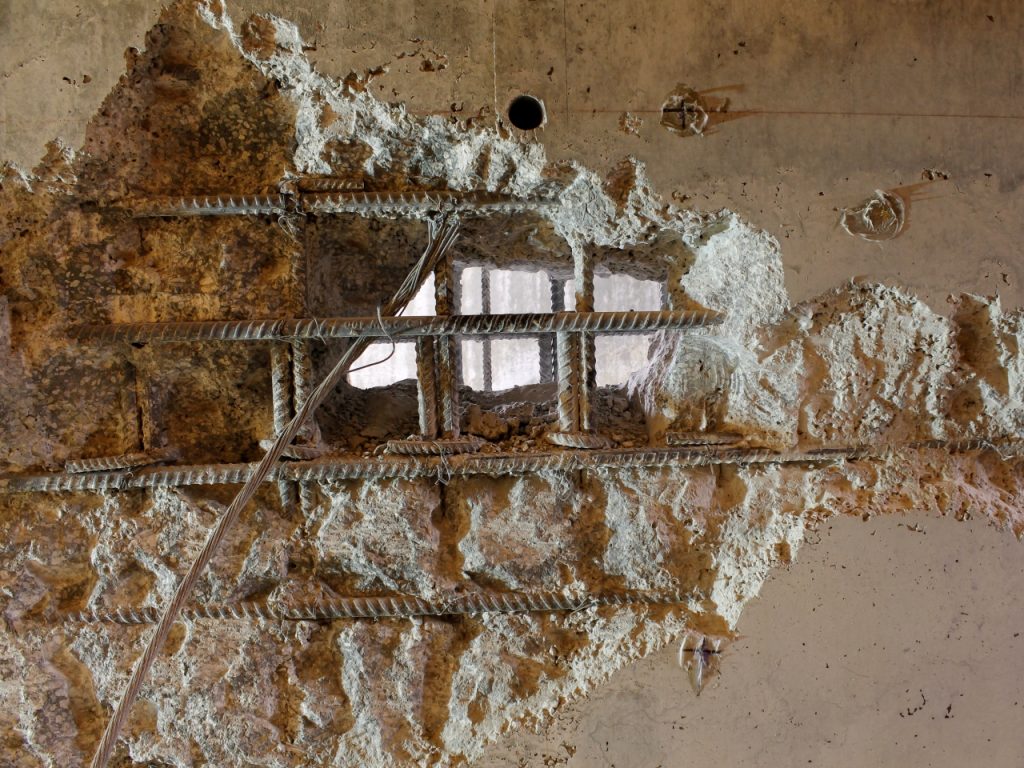
3. Estimate Crack Depth
IE method can also be utilized to estimate the depth (D) of, straight, inclined or curved, surface-opening cracks in concrete elements. In this case, the impact echo method works based on two transducers. The generated P-waves by impactor travels along the shortest trajectory between impactor and transducer. Mathematical equations are then used to estimate the depth of the surface-opening crack.

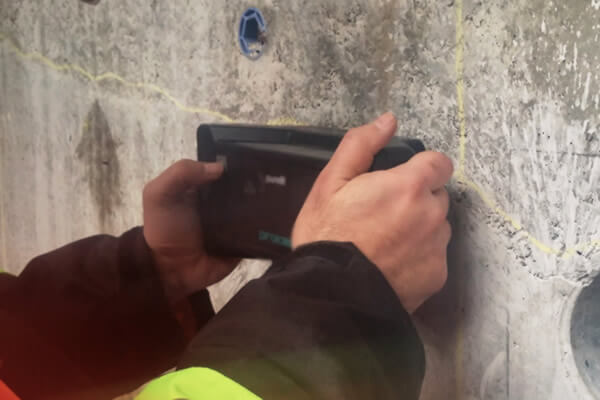


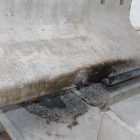

Rob Shapiro
The many benefits of asphalt paving include low maintenance and durability, easy installation, and long-lasting appearance. With proper care, an asphalt driveway or walkway can last 20 years or more, which is much longer than some paving options available today. Maintenance of an asphalt surface is low and simple. When properly sealed and maintained, a driveway or walkway made with asphalt will not need to be redone for several years. Call our team today and let us get started on bringing your property back to its beautiful state it deserves!
Non-destructive Evaluation of Concrete in Mine Facilities - FPrimeC Solutions Inc.
[…] Impact-Echo can be used to assess the thickness of concrete elements (with one-side access). It can also detect subsurface defects such as delamination. […]